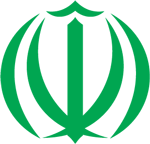Арбуз – чудесная ягода. В нём съедобно всё – мякоть, семена и даже кожура. Обилие витаминов и минеральных солей придаёт мякоти арбуза лечебные свойства и способность очищать организм от шлаков. Семена используются в народной медицине. А из кожуры можно приготовить вкусное варенье.
Не будучи медиком, я только перечислю симптомы и болезни, которые успешно лечат арбузом: повышенная температура и инфекционные заболевания, заболевания полости рта и жжение, язвы мочевого пузыря и кашель, сгущение крови и бессонница…
Хороши иранские арбузы!
Они растут как на севере станы – в Прикаспии и в Хорасане так и на самом юге – на берегах Персидского залива и Аравийского моря. Первые арбузы в Иране созревают в конце февраля – начале марта, а заканчивается “арбузный сезон” поздней осенью.
За высокое качество иранские арбузы покупают даже в Турции, Азербайджане и Туркмении. И, разумеется, в России.
В минувшем году Иран экспортировал свыше 21.500 тонн арбузов и заработал 3,6 миллиона долларов.

При достатке воды арбуз растёт и растёт, нередко достигая 20 килограмм!
А на северо-западе Ирана выращивают сорта арбуза, содержащие большое количество семян. Из них делают лечебное масло или просто сушат и обжаривают – с солью и без. Будете в Иране – “пощёлкайте” жареные семечки арбуза.
В многочисленных кафе Исфахана и Язда можно заказать свежевыжатый сок арбуза, прекрасно утоляющий жажду жарким днём. А прекрасные иранки предпочитают пить его с добавлением мороженного. Большой, 300-грамовый, стакан такого сока стоит 25000 реалов, то есть около 0,65 евро.
Зимние сорта арбуза обязательный атрибут праздничного стола на самый “семейный” иранский праздник – Шаб-е-Ялда, который отмечают абсолютно все иранцы в самую длинную ночь года. Красный цвет мякоти арбуза – символ здоровья и счастья.

Современники рассказывают, что Великий Пророк Ислама ( Да благословит Аллах его и его семейство! ) сказал: “Любая из ваших женщин, которая употребляет арбуз, будучи беременной, обязательно родит ребенка, красивого внешне и с хорошим характером.”
И по традиции – красивая песня.
https://www.youtube.com/watch?v=uZtsJhqw9Wg
Iranian Watermelons
Watermelon is a wonderful berry. It is edible everything – flesh, seeds and even peel. The abundance of vitamins and mineral salts gives the pulp of the watermelon the medicinal properties and the ability to purify the body of toxins. Seeds are used in folk medicine. And from the peel you can make a delicious jam.
Without being a medic, I will only list the symptoms and diseases that watermelons successfully treat: fever and infectious diseases, oral diseases and burning, bladder ulcers and coughing, thickening of blood and insomnia …
Iranian watermelons are good!
They grow in the north of the camp – in the Caspian and in Khorasan and in the south – on the shores of the Persian Gulf and the Arabian Sea. The first watermelons in Iran ripen in late February – early March, and the “watermelon season” ends in late autumn.
For high quality, Iranian watermelons are bought even in Turkey, Azerbaijan and Turkmenistan. And, of course, in Russia.
Last year, Iran exported more than 21,500 tons of watermelons and earned $ 3.6 million.
With enough water, the watermelon grows and grows, often reaching 20 kilograms!
And in the north-west of Iran, watermelon cultivars containing a large number of seeds are grown. Of them, make medical oil or simply dry and fry – with salt and without. Will be in Iran – “click” the fried seeds of watermelon.
In numerous cafes of Isfahan and Yazd, you can order freshly squeezed watermelon juice, which perfectly quenches thirst with a hot day. And beautiful Iranians prefer to drink it with the addition of ice cream. A large, 300-gram, a glass of juice costs 25,000 reais, that is, about 0.65 euros.
Winter varieties of watermelon are an obligatory attribute of the festive table for the most “family” Iranian holiday – Shab-e-Yalda, which is celebrated absolutely by all Iranians on the longest night of the year. The red color of the pulp of watermelon is a symbol of health and happiness.
Contemporaries say that the Great Prophet of Islam (peace and blessings of Allaah be upon him and his family!) Said: “Any of your women, who uses watermelon while pregnant, will necessarily give birth to a child who is handsome in appearance and with good character.”
And by tradition – a beautiful song.


